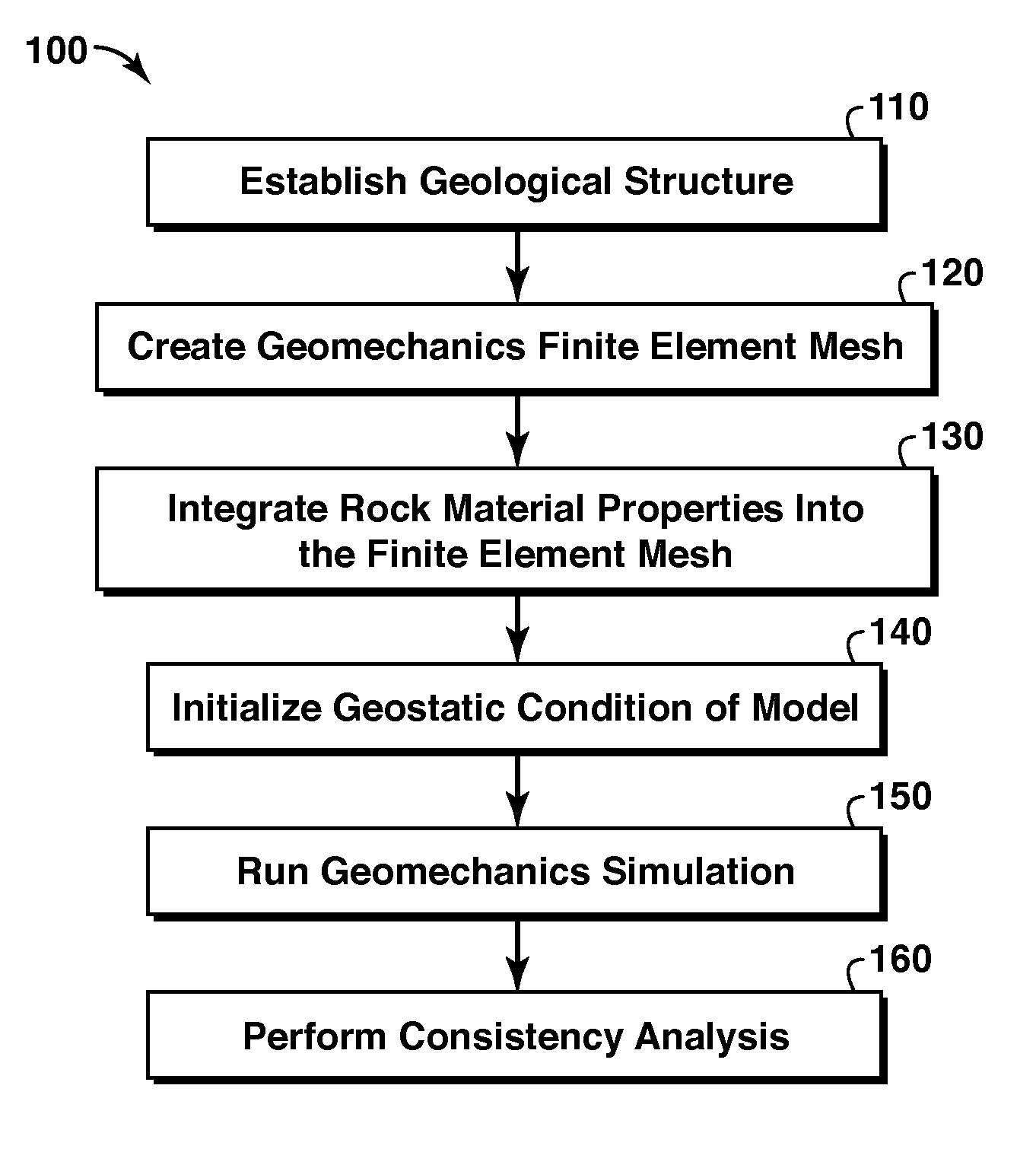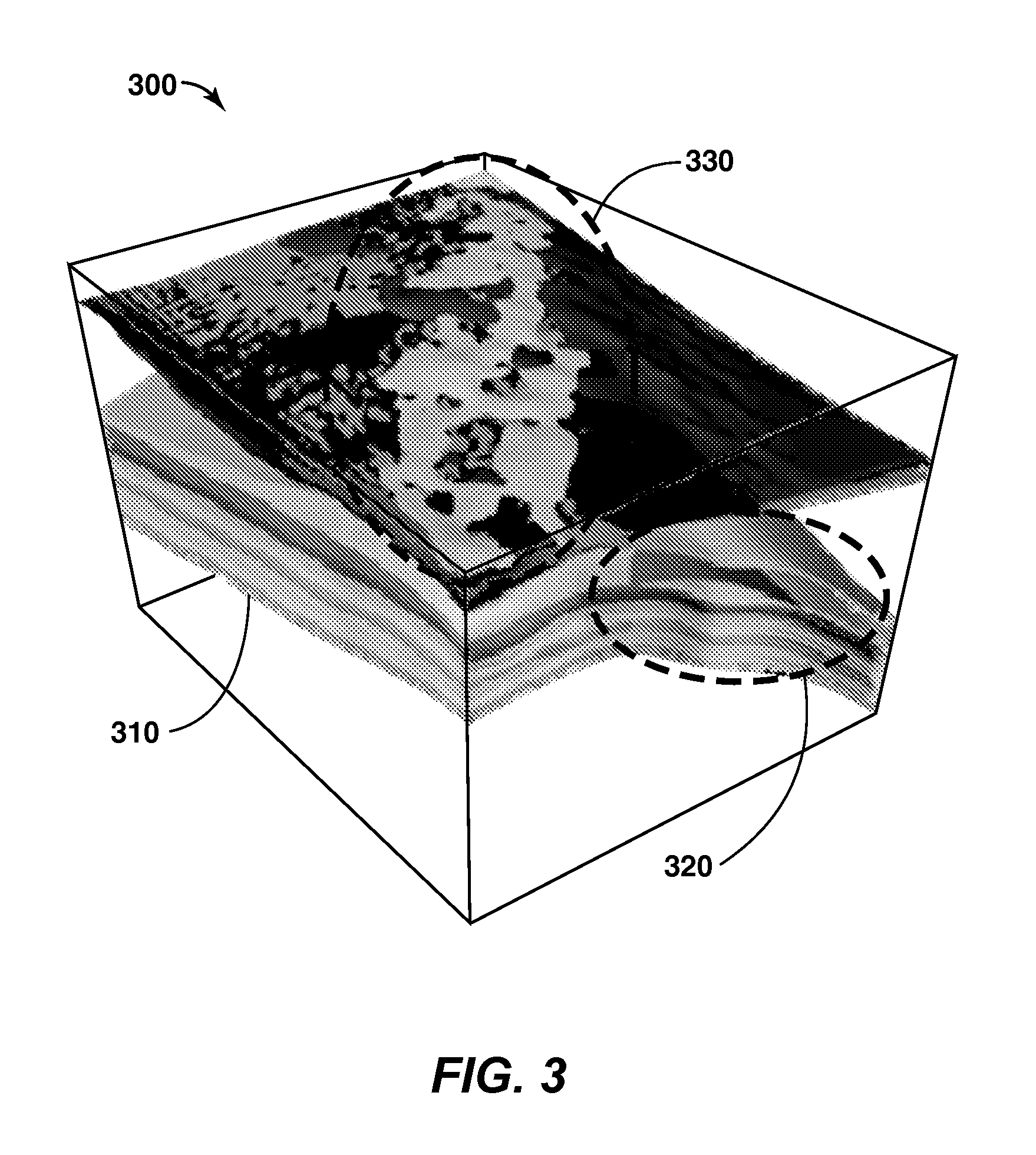Method For Modeling Deformation In Subsurface Strata
- Summary
- Abstract
- Description
- Claims
- Application Information
AI Technical Summary
Benefits of technology
Problems solved by technology
Method used
Image
Examples
Embodiment Construction
Definitions
[0041]As used herein, the term “burial” refers to a geologic process, whether continuous or discontinuous, and whether related to sedimentary deposition, volcanic eruption and / or other geologic process wherein multiple strata are placed in a substantially successive manner, one stratum atop another, in a corresponding series of stratum-producing phases leading to a formation's creation. As used herein, where the term “burial” is associated with a rock property value (e.g., Poisson's Ratio or Young's Modulus) for a stratum of interest, the term designates a virtual value of the rock property for each stratum considered pertinent to developing a stratigraphic model suitable for performing the desired stress analysis of the formation. Depending on the formation, the oldest stratum and the successively newer strata of interest can be produced in any one of the primary geologic eras.
[0042]“Lithology” means a description of the physical and approximate compositional character o...
PUM
 Login to View More
Login to View More Abstract
Description
Claims
Application Information
 Login to View More
Login to View More - R&D
- Intellectual Property
- Life Sciences
- Materials
- Tech Scout
- Unparalleled Data Quality
- Higher Quality Content
- 60% Fewer Hallucinations
Browse by: Latest US Patents, China's latest patents, Technical Efficacy Thesaurus, Application Domain, Technology Topic, Popular Technical Reports.
© 2025 PatSnap. All rights reserved.Legal|Privacy policy|Modern Slavery Act Transparency Statement|Sitemap|About US| Contact US: help@patsnap.com



